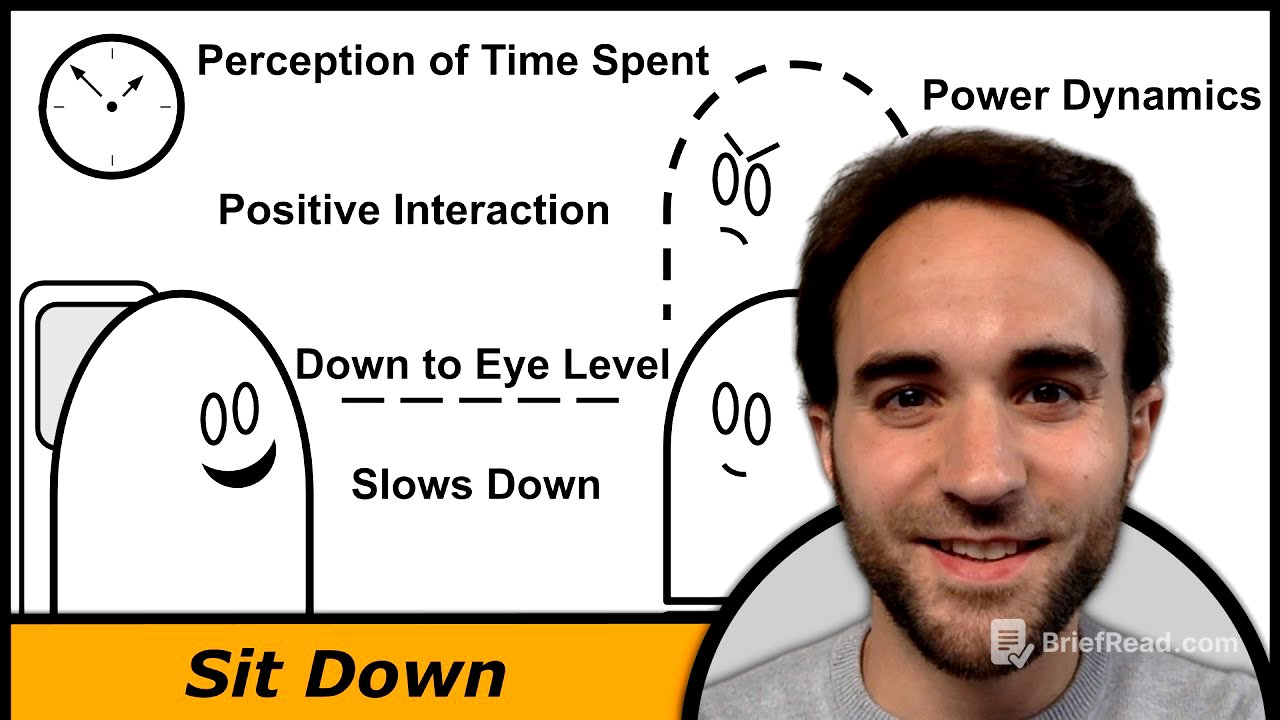TLDR;
This video explains the importance of sitting down during patient interactions for psychiatrists. It highlights how sitting down improves rapport by bringing the doctor to the patient's eye level, affecting power dynamics, and changing the patient's perception of time spent. Additionally, it helps the doctor slow down, explain things better, and ultimately makes the interaction more positive, leading to increased patient satisfaction and adherence to treatment.
- Improves rapport
- Improves patient understanding
- Increases patient adherence to treatment
- Improves overall patient satisfaction
Introduction: The Importance of Sitting Down [0:00]
The video introduces the concept of sitting down as an essential skill in therapeutic communication for psychiatrists, especially in hospital settings. It poses the question of why sitting down is important and sets out to explore the benefits it offers to both the patient and the psychiatrist. The discussion emphasizes the significance of this simple act in building effective therapeutic relationships.
Bringing You to the Patient's Eye Level [0:21]
Sitting down brings the psychiatrist to the patient's eye level, creating a sense of equality both literally and metaphorically. This facilitates good eye contact, which is crucial for effective non-verbal communication. Non-verbal cues, particularly micro expressions (small, brief changes in facial expression), are more easily observed when consistent eye contact is maintained, allowing the psychiatrist to better understand the patient's emotional state.
Affecting Power Dynamics [0:49]
Hospitalized patients often feel vulnerable due to their illness and loss of control, while doctors may appear intimidating due to their status and authority. Standing over a patient can exacerbate this power imbalance. Sitting down reduces the perceived power difference, making the patient feel more comfortable and willing to speak openly.
Changing Perception of Time [1:21]
When a doctor sits down, patients perceive that the doctor has spent more time with them, even if the actual time spent is the same. This is important because patients are more satisfied with their care when they feel the doctor has dedicated sufficient time to them. The perceived increase in time spent enhances the patient's overall experience and satisfaction.
Helping the Doctor to Slow Down [1:43]
Sitting down helps the doctor to slow down, making the interaction feel less rushed. Doctors who sit tend to explain things better and check for understanding more often, which helps to educate the patient about their care. This slower, more deliberate approach improves patient comprehension and engagement in their treatment.
Making the Interaction More Positive [2:02]
Overall, sitting down makes the interaction more positive for the patient. Doctors who sit are perceived as more compassionate and better listeners. These positive perceptions contribute to improved rapport, patient understanding, treatment adherence, and overall patient satisfaction.
Summary of Benefits [2:15]
In summary, the benefits of sitting down during patient interactions include improved rapport, better patient understanding, increased adherence to treatment, and enhanced overall patient satisfaction. The video concludes with encouragement for psychiatrists to adopt this practice to improve their interactions with patients.









